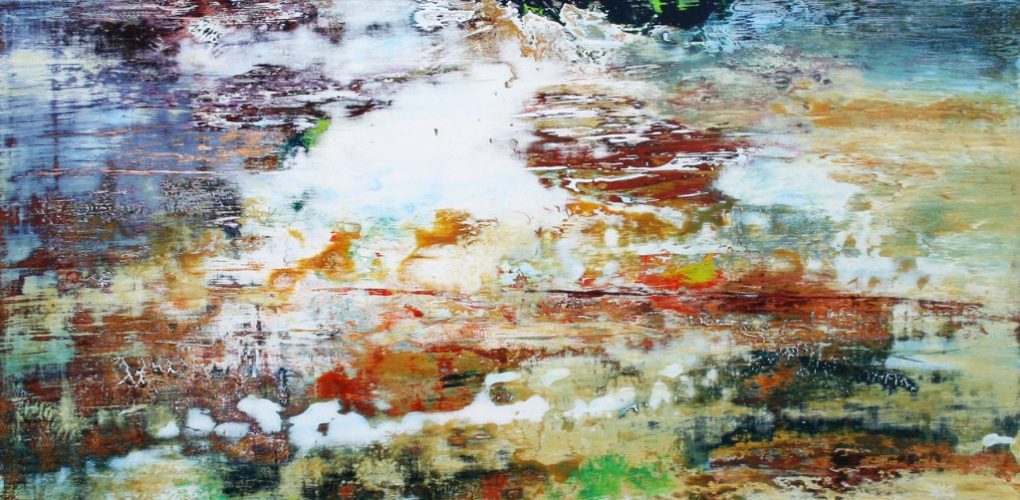Artist Studio
 In The Studio: David Stanley
In The Studio: David Stanley

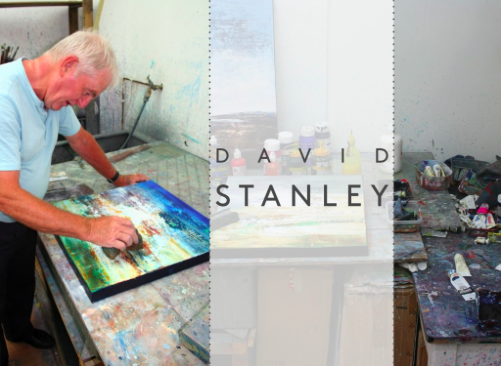
Please tell us about what you are currently working on. The new paintings are evolving to include more mono-printed elements. These are to provide extra structural components to the compositions, the textures they provide remaining or being sanded as the mood of the work dictates.
Describe your process from initial inspiration to final artwork. My process is determined initially from ideas presented when looking at the surface of water. With its manifold interpretations, am I seeing the actual surface, sights from beneath the surface, reflections of the surroundings, or an amalgam of these? I am fascinated by how quickly each or any of these can change and in so doing can effect a change of mood.
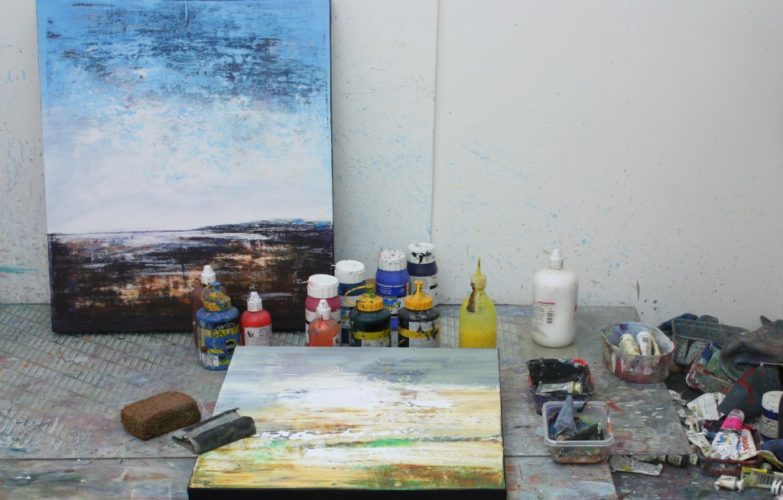
The initial response is modified by visual memory for I never paint onsite as I feel specifics of landscape elements might detract from my firm belief that the work must always be a painting rather than just a picture. In this, I mean that the formal elements of painting, composition, light, colour, surface etc. are used to produce an object in its own right. This objectivity, again, is a reason why I prefer not to frame my canvasses.
The making of the work follows traditional practice initially with a primer layer, some underpainting, followed by establishing the major compositional elements before my layering process begins. I revise these layers in a continuous series of sanding and application routines with scumbled or glazed modifications as the work dictates. Once my painting criteria are met then the work is finished.
You work almost exclusively in acrylic – why is this? My process determines that acrylic must be my medium of choice principally because of its quick drying time. I really need to have no more that a single day between the application of paint and its subsequent sanding.
What is your working day like? This always begins with reflection on the previous day’s work. Do I sand or should I paint some more first? Once this is done, the process kicks in and I hope to work myself into ‘the zone’; that place Robert Rauschenberg described as being a place to be lived somewhere between life and art.
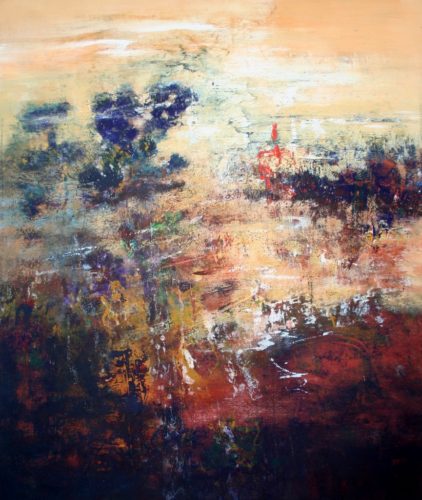
‘Down the Edge’, acrylic on canvas, 2014, 120 x 100 cm
Are your landscapes influenced by your surroundings or do you go further afield for inspiration? I go fishing for fun and sometimes competitively so I spend a good deal of time looking at water as described earlier. On seaside holidays, the beach is a source of inspiration, whilst in cities I visit galleries of all sorts to find historical or contemporary references.
How do you overcome creative block? By having a strong working method. I never fear the blank canvas for once the underpainting is on, the adventure can begin!
What are you most proud of? Making a positive difference in the lives of my past students who have thanked me for helping make them the artists they are today.
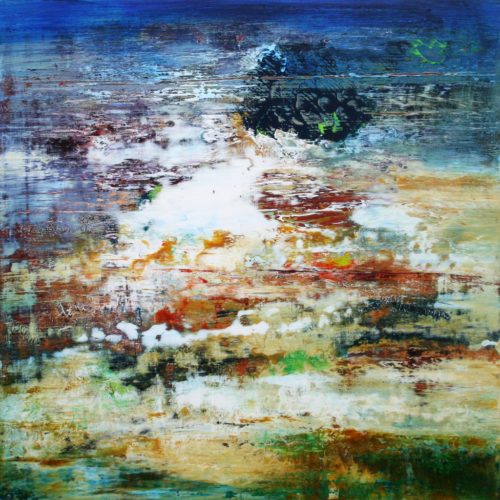
‘Love is a Weedy Swim’, 2014, acrylic on canvas, 50 x 50 cm
What advice would you give to an aspiring artist? First and foremost get yourself a working method. Spend lots of time looking at the original work of artists you admire. Similarly, don’t be too quick to dismiss work that doesn’t strike you immediately.
And of course here I must include my number one rule: don’t be afraid of the dark.
What’s next for you? Next is to put together a body of work for our Open Studios week at Cross Street Arts, Cross Street Arts, a group of professional artists based in Standish, North Wigan, of which I am a director.
